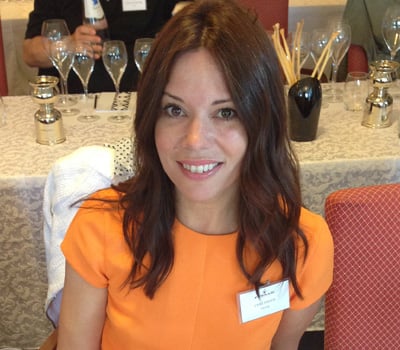Biondivino, Ceri Smith’s wine shop at Polk and Green, has been San Francisco’s go-to spot for small-production Italian wines since it opened in 2006. When April Bloomfield and Ken Friedman relaunched Tosca Cafe, adding a kitchen to the storied bar, they tapped her to run the wine program with Randall Grahm of Bonny Doon. (Check out our video about their effort to foreground Tuscan reds here.) While she spends most of her time at the shop these days, once or twice a week you may still find her on the floor at Tosca.


On selling wine next to a busy bar
There are days and nights that the wine program has been just shy of the bar sales, which makes me happy. At the beginning, there was kind of this little rivalry between the wine program and the bar. Of course, there’s higher turnover at the bar than with dining, so there’s higher volume. But on the wine list, a wine that goes for $50 or $100, that’s five or 10 cocktails, and it takes two minutes to open it and a few glasses to pour it in. So there’s less prep work, no squeezing juices or mixing things. And if you do a high-end sale, that’s 28 cocktails! So that’s my logic, and the people behind the bar look at me and say: of course that’s your logic.
A Rosso di Montalcino outsells Brunello and Chianti
It’s the quality—it’s a super small producer. It’s often confused with Canalicchio di Sopra, which is right across the street I think, but this is Canalicchio Franco Pacenti. The quality and structure and elegance is there, and it’s not all tweaked and smoothed out. There’s depth and the acidity is fresh, the structure’s there. It’s very focused, and it completely over-delivers for the price. I can give it to anybody and if they like wines that have acidity and structure, they’ll come back and say: ‘That’s great.’ It comes down to their scale, and a winemaker who really focuses on their house style—they’ve been making it for over a hundred years. It’s not a market-driven wine. It’s not trying to be anything to anyone. And it’s a wine nobody knows. You ask anyone: Who’s Franco Pacenti? And they’ll say: I dunno. It’s one of those producers that’s been a staple here since we opened and we started doing it by the glass. Right now we have 2009 by the glass, and it’s got some more fruit to it, not quite so tight, so it’s a nice by the glass pour. The first night we put it on the list, it blew all the other wines away, which was surprising, since it was more expensive than most of the other wines. It’s almost like getting the quality of a Brunello for a by-the-glass pour.
On wines from Alto Piemonte and Valtellina (Vallana and Ar.Pe.Pe) outselling Barolo and Barbaresco
It’s again taking people out of their familiarity and comfort zone. I’m sure if I put Vietti on by the glass it would sell like crazy, but everybody’s had that. You see what your neighbors are pouring, and to me it’s more interesting to go to a restaurant and try things you’re not familiar with, and say: That was extraordinary, and I wouldn’t have tried that otherwise. And to me, the wines from northern Piedmont are really great values for the quality and consistency you get. You get this hidden gem that you wouldn’t find elsewhere. It’s a little leaner style of nebbiolo from the north, it’s mountainous and treacherous. We did a whole staff training on Alto Piemonte: Boca, Colline Novaresi, all the areas up there. And to the staff I was like: ‘Ghemme tastes more supple and soft.’ And I said: ‘look at the map.’ I said: ‘Think about those mountains, what lives there? Goats.’ They’re wiry and sinuous, they learn to survive. And then you look at Ghemme and it’s lower, it’s more meadows. Cows live there. You get more juice, more suppleness. But the mountains, the Carema and Lessona, they have to dig deep into the mountain to get nutrients. And literally, you could watch their faces: like, a lightbulb went off. It’s nice to have something that’s classic, but lesser known.
Unexpected duds
Champagne. I thought Champagne would do really, really well, and I love, love, love Champagne. I mean, it’s the only non-California, non-Italian wine on the menu. And I’m surprised by how little Champagne we sell. In the beginning when we first opened I had a pretty diverse Champagne bottle list. The only brand name was vintage Krug, but then things like Marie Courtin, Ulysse Collin, smaller grower Champagnes. I don’t know if it was because it wasn’t Clicquot… Glass pours of Champagne do all right, but on the bottle side—I’m not sure, maybe it’s because people are having cocktails instead of Champagne.
Longtime senior editor at Wine & Spirits magazine, Luke now works for the Stanford Technology Ventures Program.
















